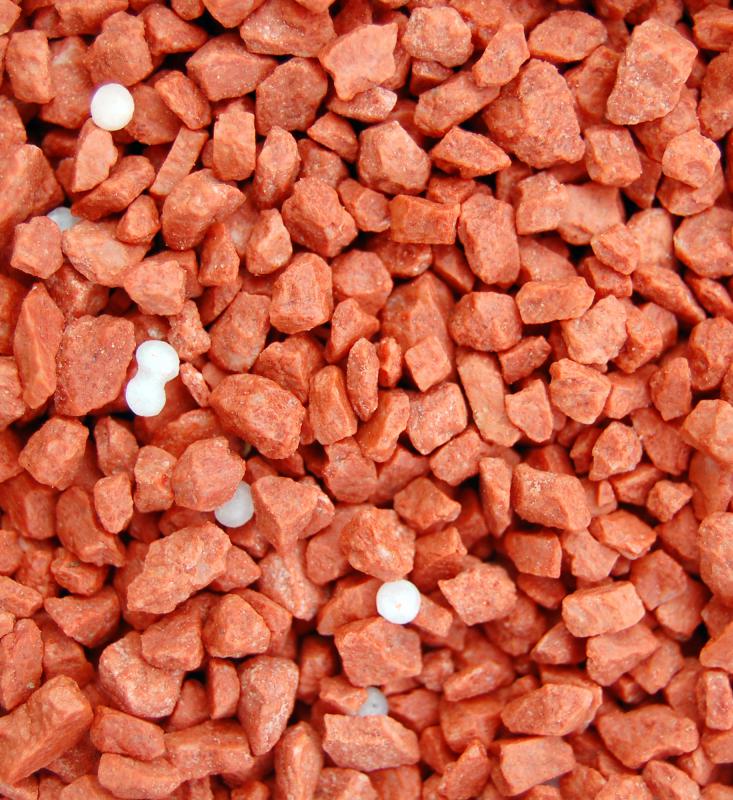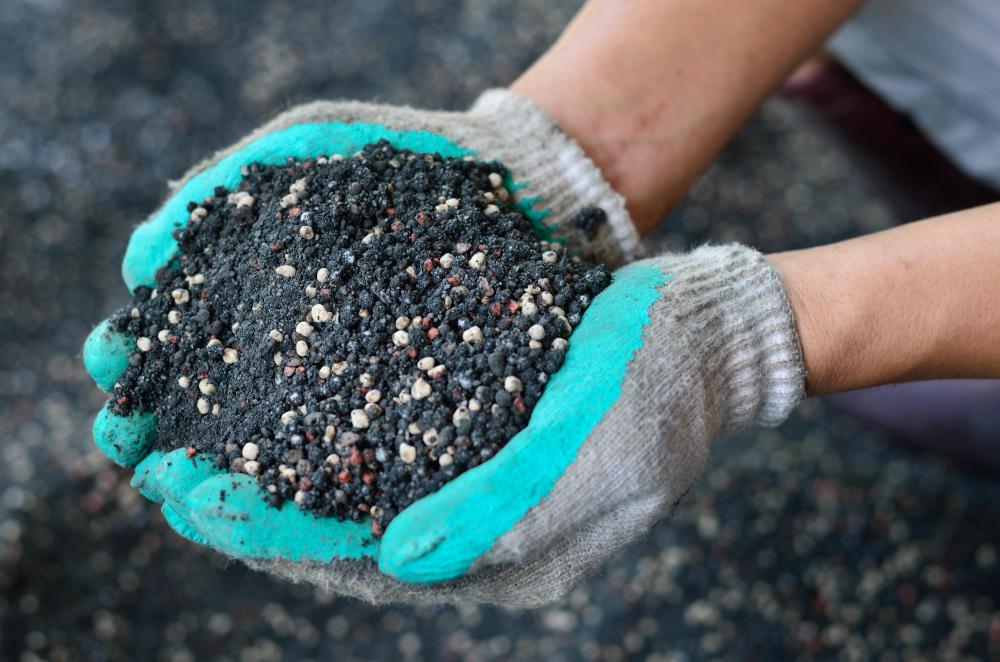At WiseGEEK, we're committed to delivering accurate, trustworthy information. Our expert-authored content is rigorously fact-checked and sourced from credible authorities. Discover how we uphold the highest standards in providing you with reliable knowledge.
How do I Choose the Best Fall Lawn Fertilizer?
There are several factors to consider when choosing the most appropriate fall lawn fertilizer including when to apply the product, its chemical make up, and whether or not the product is slow or fast releasing. Most gardening experts agree that fall maintenance is important for any lawn because it prepares the grass and soil for the upcoming winter season. The purpose of lawn fertilizer is to ensure the lawn can respond well to stress and that it remains disease free. In addition to the application of fertilizer, preparing the lawn for winter also involves cutting the grass to a reasonable height before applying the product.
Timing is important when applying a fall lawn fertilizer to the grass and ground. September is an excellent time to take care of winter lawn maintenance even though most areas are still experiencing warm weather and winter may still be far from the gardener's mind. Choosing this time ensures the product will not freeze before it can be of use, and the chemicals and nutrients in the lawn fertilizer are less likely to burn the grass at this time of year. The local climate will determine the best time for lawn fertilizing, and homeowners can seek advice from the local gardening centers if in doubt.

The chemical or nutrient make up of the fall lawn fertilizer is very important as well. Most plants have specific food requirements, and common lawn grasses are no exception. Almost every grass needs sufficient quantities of nitrogen, phosphorus, and potassium to be healthy. The most important of these nutrients is nitrogen. Consumers can find information regarding the included amounts of these nutrients on the fertilizer packaging, and can also ask for assistance from the nursery staff in choosing an appropriate fall lawn fertilizer.

Fall lawn fertilizer products are available in either fast or slow releasing formulas, and each type has its advantages and disadvantages. Fast acting fertilizers provide more than adequate amounts of nitrogen to the soil, but they can also cause the grass to burn in the heat of the sun. These fertilizers are normally less expensive than the slow releasing formulas. Slow release, or control release, fertilizers are known to stay on the areas they are applied, offer a more uniform growing pattern, and do not burn the soil or grass. While they are more expensive than the fast acting fertilizers, many gardening experts feel they are more effective, making them the more economical choice in the long run.
AS FEATURED ON:
AS FEATURED ON:












Discuss this Article
Post your comments